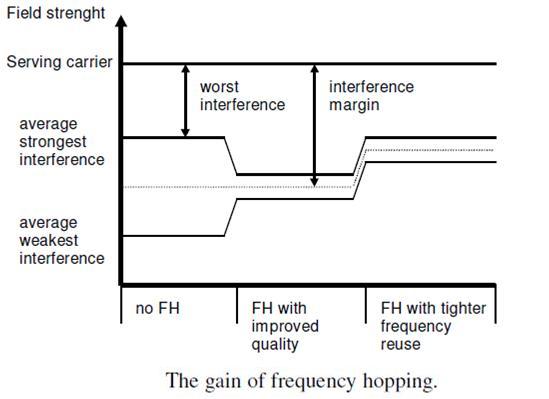In a conventional non-hopping network, each call is transmitted on a single fixed frequency. This means that the interference situation in a network is also quite stable. Some calls may experience very little interference and the other calls may be interfered severely.
Severe interference can be avoided by a handover, but the probability of finding an interference free channel decreases as the network load increases. In a non-hopping network, the interference tends to be continuous, so that the same interference source affects several consecutive bursts. If this interference is strong enough it may lead to a corruption of several consecutive bursts.
The error correction measures used in GSM can not usually tolerate several corrupted bursts in a speech frame and thus these frames are likely to be erased causing significant deterioration in speech quality.
In random hopping network, the interference sources vary from burst to burst. Thus, the interference tends to get averaged over all the calls in the network. As a consequence, the interference affecting each call in the network has a lower standard deviation around its mean value. This effect is illustrated in Figure. Another advantage of random frequency hopping is that the severely interfered bursts occur randomly. Because of this, the probability of several consecutive corrupted bursts and erased frames decreases.
In order to use the available frequency spectrum efficiently, the frequencies are reused in a network. The sufficient distance between the cells using the same frequency depends on the minimum C/I ratio tolerated by the system, the surrounding environment and the network topology.
In practice the minimum reuse for a non-hopping macro cells is about 12. This means that the same frequency may be used in every 12th cell. Because the interference levels for each user vary considerably, a large interference margin has to be included to guarantee sufficient quality for each user in the network. When the random frequency hopping is employed the deviation of interference level is decreased as illustrated in Figure. This means that the interference margin used in the frequency planning can be reduced allowing the usage of tighter frequency reuse as illustrated in below Figure.
